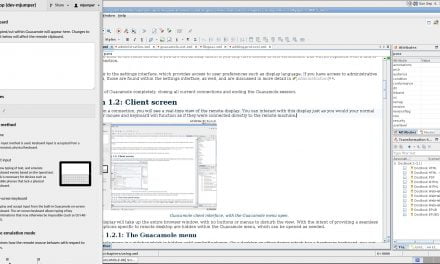Here are five mitigation strategies and solutions that need to be put in place as GNSS systems become a technology enabler.
There was a time not too long ago when the only Global Navigation Satellite System (GNSS) available was the US government-owned Global Positioning System (GPS). These days, there are numerous alternatives prowling the skies overhead, all providing positioning, navigation and time signals for a myriad of applications.
By 2023, the European GNSS Agency estimates that the number of active GNSS devices will cross the nine billion mark. GNSS functionalities, too, will become more integral among industries, from maritime, energy and finance to transportation, military and telecommunication.
However, no matter the GNSS being used, satellite navigation signals are notoriously weak, which means that they are easier to block, damage or compromise by an array of threats. As society’s reliance on GNSS grows, it is pertinent to understand what the threats are, what are the risks involved and how best to mitigate them.
Most common types of GNSS threats
GNSS threats fall under two categories: natural and man-made.
- Natural threats include solar activities, which are electromagnetic interferences from the Sun, as well as scintillation, which occurs when the satellite signal is refracted or diffracted in space due to irregular activities in our atmosphere.
Natural interference could also happen in urban, built-up environments. For example, common construction materials, such as metal and glass, are effective reflectors that cause satellite signals to fragment and scatter. - Man-made threats interfere with satellite signals in slightly different ways. For example, one common interference is called ‘spoofing’, which is an intentional, usually nefarious form of interference done using fake satellite signals. This form of interference fools receivers into thinking that they are located at different places and times altogether. Another form of interference is called ‘jamming’, which may take the form of white noise and can cause the loss of signal accuracy and position.
GNSS threats do not always interfere with the signals themselves, either. GNSS Segment Errors occur when the system is simply overwhelmed by data, thus preventing satellite signals from being sent or received.
Finally, GNSS is susceptible to cybersecurity attacks. Unlike other threats that rely on radio frequencies, cybersecurity attacks are aimed at manipulating the software layer of the receivers to alter their interpretation of satellite signals.
Real-world GNSS risks
Given the increasing number and prevalence of the threats, manufacturers of GNSS-reliant systems and related applications need to be aware of the potential impact on their products, customers and end-users.
The risk profile is application-dependent and will differ significantly from organization to organization, and from device to device. For example, in Malaysia, efforts have been ongoing to automate and digitalize its national power grid. However, electricity substations are reliant on GNSS signals to operate. If a substation’s time signal is spoofed, it could disrupt energy distribution across the entire country.
Similarly, Singapore’s recent transition to automated cranes at its ports may be vulnerable to GNSS attacks that prevent automated cranes from receiving the right GNSS signals, causing the entire system to be paralyzed. Prolonged periods of delays will inevitably lead to severe financial losses.
In 2019, Tesla’s Model S and Model 3 were shown to be vulnerable to spoofing attacks, allowing hackers to steer the onboard autopilot navigation system off the road.
In 2020, the US government even signed an Executive Order to protect ‘Positioning, Navigation and Timing (PNT) services that are vital to the functioning of technology and infrastructure’ after incidents where GNSS signals of ships and airplanes were hacked.
Complicating matters further is the fact that jamming and spoofing equipment are becoming more affordable. It is easier than ever, then, for hackers to interfere with GNSS signals for personal gains, mischief-making or potentially more sinister purposes.
Viable anti-threat strategies
Aside from understanding the specific risks and how they are evolving, it is critical to work towards anticipating and mitigating future threats.
The good news is that, depending on the nature of the device, the system and the risk profile, there are many threat mitigation options available.
- Multi-frequency receivers are better at preventing spoofing or jamming. The more frequencies a receiver can tap to receive signals, the more accurate the computed position will be. In fact, advanced receivers are able to narrow the location of individual objects down to the centimeter level.
- Advanced antennas can modify their radiation patterns to boost the strength of GNSS signals, which are weak and extra vulnerable to spoofing and jamming. The military, in particular, rely on advanced antennas to pinpoint targets on the battlefield.
- Software algorithms also play an important role. Buildings in urban areas can cause position errors that vary anywhere between a few meters to a few hundred meters. This is especially problematic for unmanned vehicles, such as drones and even ‘air taxis’ on the future. Without accurate positioning in urban areas, these unmanned vehicles may not function dependably or safely. To mitigate these errors, specialised algorithms within receivers can reject the satellites that are blocked by buildings, then quickly switch to other available satellites that are in better positions to provide accurate signals. More advanced solutions even let operators know where and when GNSS signals will be reliable, which in turn allows unmanned vehicles to navigate urban environments safely and dependably.
- Dedicated test products and services can reach beyond mitigation measures to help organizations assess their existing GNSS-dependent systems. One testing approach is done via precision environment modeling, which recreates real-world environments and simulates all kinds of GNSS threats, from jamming and spoofing attacks to physical interferences in the environment.
Finally, there are also GNSS threats databases that are proactively updated, allowing organizations to keep abreast of the constantly evolving security landscape.





















